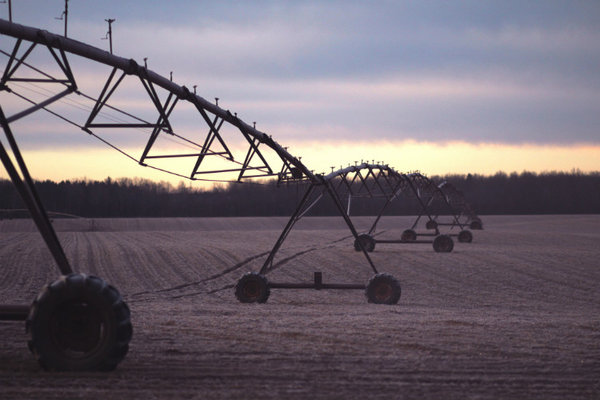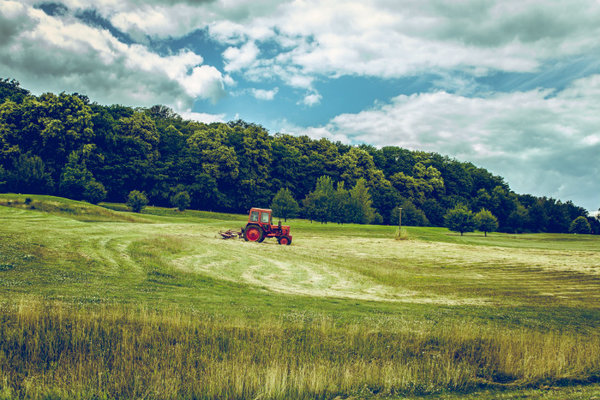In a society that has gotten used to disposing of the last-greatest for the latest and greatest, there is one thing most Americans forget won’t be replaced by the newest, fastest gadget or application. In fact, the current generation has become so focused on their smartphones, tablets, laptops, and iWhatevers in front of them, that many have forgotten what it feels like to be connected to something other than the internet or the latest game.
Something as incredible and beautiful as planet Earth.
After all, it’s the Earth that provides the food that we eat. What we need to consider is how we produce this food. Sustainable agriculture is the answer to a world that commonly uses pesticides and pollutants to produce the crops that we take for granted. Unfortunately, the price may be too high for the planet to pay.
This is why the need for sustainable agriculture is critical. Before looking forward, it’s a good idea to look back and see what has led us to our current situation – and how things should change for the better.
Learning From a Dust Bowl
Chances are the dust storms of the 1930s, which were the world’s worst environmental disaster of the 20th century, are barely mentioned in textbooks. However, this major event has lessons to teach about the importance of better farming techniques.
As farmers moved west, plowing up the plains to grow wheat crops, they hadn’t yet learned about crop rotations, re-nourishing the soil, and letting plots rest for a season. They plowed under the wild prairie grasses. When one moderate drought hit, taking with it wheat crops that could not withstand the heat and lack of rain, so the die was cast.
With nothing to hold down the fragile top soils, they were flung into the air, causing more loss from wind erosion than what washed away in the Mississippi. For some areas, it took decades before the soil recovered enough to be productive again. With knowledge came new techniques for farming. As with all growth in an industry, a shift in agricultural practices would require better equipment.

Since the mid-1940s, agriculture has grown by leaps and bounds as new discoveries allowed farmers to manipulate growth and production with mechanization, fertilizers and manipulation of seed genetics to make them less susceptible to pests. At the same time, they increased production, and government polices promoted a “grow more with fewer farmers” mentality. Ma and Pa were no longer able to make a living selling their tomatoes and corn at a stand at the end of their driveway. Now they had to compete with what had become a largely commercialized industry.
While some of these industry changes have benefited farmers and consumers, many of them have created new problems as risks with groundwater contamination from fertilizers and pest control chemicals increased. Consumers also question the use of GMOs – genetically modified organisms and how long-term consumption of them can affect humans. GMOs have also had a backlash effect by creating super bugs and weeds that are resistant to most pesticides, calling for the manufacturing of stronger chemicals.
What Sustainability Isn’t
Sustainability is more than just growing healthy crops that are good for the soil, the water and all other aspects of the environment, including people. It is more than just being sure there will be enough for all, the climate won’t be too warm or cold, and there will still be trees and grass.
If trying to grow sustainable crops or livestock actually creates higher carbon emissions, uses more energy, creates more waste, causes more land erosion, cuts down more forests, pollutes more natural water resources and creates more expensive industry while eliminating more of the Ma and Pa farms and communities, how can it be called sustainable?
If when creating more mechanized farms for livestock or plant crops built in areas with limited natural water resources, water must be brought into the area. For example, if you wanted to grow beans in the desert just outside of Las Vegas, you would need to bring in a great deal more water than you might need if just planting carrots. It’s an extreme example, but the point is that beans would not be sustainable in Las Vegas, but carrots might be. Rather than forcing water into an area where little exists, why not change the crop planted to one more suited to an arid climate?
What Sustainability Should Be
Over the years, agriculture has become less about providing food for consumers and more about making money for big industry and chemical manufacturers. As the world population increases and land and water resources decrease, sustainability needs to become a high priority for agriculture. It needs to go back to being the Ma and Pa farms and urban community gardens where the key operative word is community.
What can you do to promote sustainability? Try eating less meat, growing your own food, supporting local farms, or buying organically-produced foods. These seemingly small things can add up to make a big difference to the planet.
By reducing food waste, growing organic crops and raising organic livestock, changing diets, and encouraging more local farmers markets, sustainability becomes what it was always meant to be: life sustaining.

This Women of Green guest blog is by Megan Ray Nichols. Megan writes about many environmental topics including, renewable energy, conservation and sustainability. She invites you to join the discussion on her own blog, Schooled By Science.
Women of Green is TURNING UP THE VOLUME of the feminine voice on the planet in order to create the world we know is possible.
